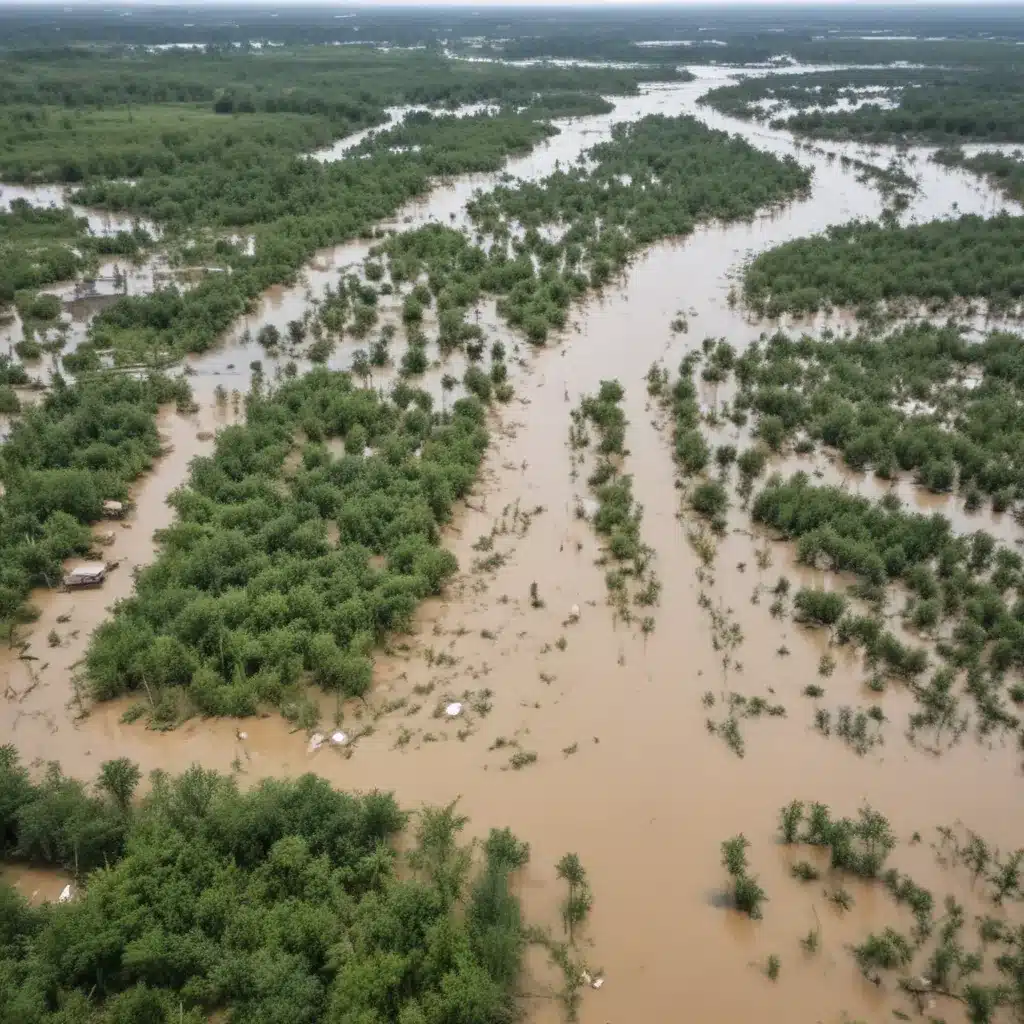
As experienced flood control specialists, we understand that effective flood management requires a comprehensive approach blending structural and non-structural strategies. While traditional engineering solutions like levees, dams, and flood barriers serve a crucial role, integrating traditional ecological knowledge (TEK) can significantly enhance the resilience of communities facing flood risks.
Flood Risk and Water Management
Flood Hazard Assessment
Accurate flood hazard assessment is the foundation for developing effective flood control systems. This involves detailed hydrological modeling to simulate flood scenarios, comprehensive flood mapping to visualize risk zones, and careful consideration of climate change impacts that may alter future flood patterns. However, relying solely on scientific data and technical analyses can overlook the invaluable insights offered by local and indigenous communities who have lived with and adapted to flooding for generations.
Flood Vulnerability Analysis
Assessing a community’s flood vulnerability should go beyond just physical exposure to floodwaters. It’s crucial to also consider socioeconomic factors, such as the presence of critical infrastructure, the distribution of low-income households, and the overall capacity of the community to prepare for, respond to, and recover from flood events. By integrating traditional ecological knowledge, we can gain a richer understanding of a community’s vulnerabilities, the root causes of those vulnerabilities, and the unique cultural and social resources that can enhance resilience.
Structural Flood Control Measures
Levee and Dike Systems
Levees and dikes remain essential structural flood control measures, but their design, construction, and maintenance might want to evolve to meet the challenges of the 21st century. Adhering to rigorous engineering standards and using durable, climate-resilient materials are crucial. However, traditional ecological knowledge can provide valuable insights into the natural hydrology and geomorphology of a region, guiding the placement and design of these structures to minimize unintended consequences, such as disrupting natural flood patterns or exacerbating erosion.
Dams and Reservoirs
Dams and reservoirs are another important element of flood control infrastructure, but their management might want to be balanced with environmental and social considerations. Compliance with dam safety regulations and optimizing reservoir operations for both flood storage and water supply are essential. By integrating traditional ecological knowledge, we can better understand the historical flow regimes, sediment dynamics, and the role of floodplains in supporting biodiversity – insights that can inform more sustainable and ecologically-sensitive dam and reservoir management.
Floodwalls and Barriers
Floodwalls and deployable flood barriers can provide critical protection for urban areas and critical infrastructure. However, their design and deployment might want to consider the local context, including traditional land use patterns, cultural heritage, and the potential impacts on vulnerable communities. Integrating traditional ecological knowledge can help double-check that that these structural solutions are compatible with the natural and social fabric of a place, minimizing unintended consequences and enhancing their long-term resilience.
Non-Structural Flood Mitigation
Flood-Resilient Urban Planning
Incorporating flood resilience into urban planning and land-use regulations is a crucial non-structural approach. This includes strategies like preserving and restoring natural floodplains, promoting sustainable drainage systems, and incentivizing nature-based solutions. By working closely with local communities and drawing on their traditional ecological knowledge, planners can better understand the historical flood patterns, the role of natural features in flood management, and the culturally-appropriate design of flood-resilient infrastructure.
Emergency Preparedness
Effective emergency preparedness and response are essential for saving lives and minimizing damages during flood events. This includes reliable flood forecasting and early warning systems, well-developed evacuation plans, and comprehensive post-flood recovery strategies. Traditional ecological knowledge can provide valuable insights into historical flood patterns, indigenous warning systems, and community-based coping mechanisms that can enhance the effectiveness of these emergency management measures.
Traditional Ecological Knowledge Integration
Indigenous Flood Management Practices
Indigenous communities around the world have long developed sophisticated flood management practices tailored to their local environments. These may include watershed-based approaches to water resource management, traditional early warning systems, and land-use strategies that work in harmony with natural flood patterns. By documenting and learning from these time-tested practices, we can identify innovative solutions and integrate them into modern flood control frameworks.
Collaborative Governance
Effective integration of traditional ecological knowledge requires a collaborative governance approach that actively engages local and indigenous communities as equal partners. This involves community-led data collection, knowledge co-production, and the establishment of institutional mechanisms that facilitate the exchange of information and the co-development of flood resilience strategies. Such an approach can help bridge the gap between scientific and traditional knowledge, fostering more holistic and culturally-relevant flood management solutions.
Flood Risk Communication and Awareness
Public Outreach and Education
Improving public understanding of flood risks and preparedness is crucial for enhancing community resilience. This includes developing accessible flood risk mapping tools, promoting individual and household-level preparedness measures, and supporting community-based initiatives that empower residents to take ownership of their flood management strategies. By integrating traditional ecological knowledge into these outreach efforts, we can double-check that that the messaging and approaches resonate with diverse cultural perspectives and lived experiences.
Decision Support Tools
The development of robust decision support tools, such as flood risk assessment models and visualization techniques, can greatly aid flood management planning and implementation. However, these tools might want to be designed with a deep understanding of the local context, including the incorporation of traditional ecological knowledge. This can help double-check that that the outputs of these tools are meaningful and actionable for the communities they aim to serve, ultimately leading to more effective and equitable flood risk reduction strategies.
As flood control specialists, our role is to develop and implement comprehensive flood management solutions that draw on the best available scientific knowledge and engineering practices, while also recognizing and integrating the invaluable insights offered by traditional ecological knowledge. By embracing this collaborative and holistic approach, we can help build more resilient, sustainable, and culturally-relevant flood control systems that serve the needs of communities across the globe. To learn more, I encourage you to visit www.floodcontrol2015.com for additional resources and case studies on this important topic.
Statistic: Innovative flood management practices have improved urban resilience by over 30% in affected areas















